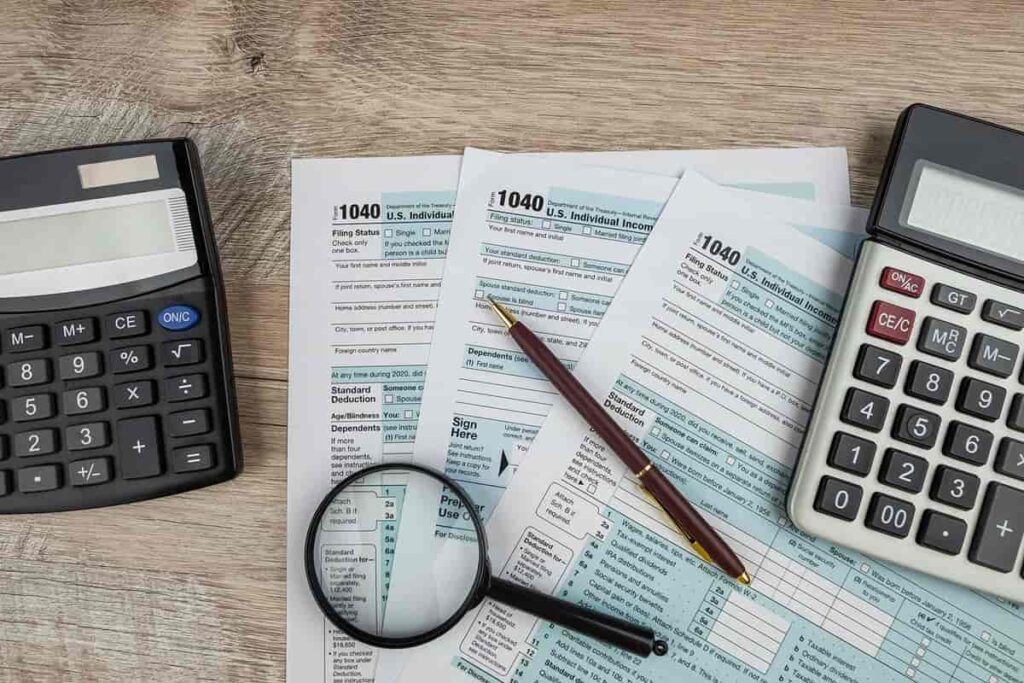The Best SaaS Stocks and How to Find Them
Table of contents

The more time you spend in institutes of higher learning, the more you realize how little you know. This awareness sometimes means you’ll accept lesser-known facts as truth without probing them. Did you know that when someone dies, their fingernails keep growing? Actually, that’s totally false, and we only learned that recently after repeating this “fact” to about a dozen people.
Another fact we’ve been repeating regularly is that software-as-a–service (SaaS) business models command a premium in the market. We hadn’t actually seen the data, we only assumed that was true because we wanted it to be true. Intuitively, SaaS companies seem lower risk for the following reasons:
- Predictable revenue streams that are usually heavily diversified
- Easy-to-understand metrics to monitor business health
- Contracts lock in customers so it’s not so easy to cancel
Businesses that offer a lower level of risk in a domain where risk runs rampant ought to be priced at a premium. Fortunately, someone else did all the heavy lifting and figured out that investors do in fact ascribe higher valuations to SaaS companies.
On average, investors are paying higher multiples today for SaaS companies than at any other time in public SaaS trading history.
Credit: Practical Venture Capital
About Practical Venture Capital
You’ll often see wantrepreneurs on Twitter badmouthing venture capitalists who didn’t throw truckloads of cash at their brilliant idea. “It’s because I’m a <INSERT DISADVANTAGED CLASS HERE>,” you’ll hear them say. What these people imply is that the only barrier keeping them from being the next Elon Musk is the availability of venture funding. The truth is, the success rate of startups that get funding is dismal.
Another “fact” thrown around flippantly is that “nine out of ten startups will fail.” You can measure that success rate in about a thousand different ways, so what about asking a venture capital firm? Practical Venture Capital or PVC is a venture capital firm run by two partners – Dave McClure and Aman Verjee – who “started and managed more than 20 microVC funds and invested in thousands of startups in over 50 countries around the world.” In their experiences working as early-stage investors, 50% of startups fail to show their investors any return.

Your typical venture capital fund has a lifespan of about 10-15 years – from the time investors pony up the funds to when the last startup exits. Investors who participate in these funds often want to exit early for any number of reasons. That’s where PVC steps in. By coming in at a later stage, they’re avoiding loads of risk and buying proven value at a 25-50% discount.

Tech investing is incredibly risky. Unlike most tech investors, we’re not interested in studying growth stories. We’ll assume you have a great story and sizable opportunity. We’re primarily interested in reducing risk by looking for red flags, things like customer concentration risk, or companies with no meaningful revenues. Sure, we might miss out on some upside, but we’ll easily offset that by not investing in duds. PVC takes this same approach by investing in venture capital funds after they’ve started reaping rewards. And they appear to have a great deal of interest in SaaS business models.
What Are SaaS Stocks?
Software as a Service or SaaS refers to a business model that some software companies adopt. Says PVC, “the category shares some aspects of cloud computing, but its focus tends to be clearer: SaaS is simply the delivery of software applications over the Internet from a server that is hosted by the SaaS provider somewhere far away.” Customers who want access to the software purchase a subscription (usually a recurring revenue contract of 1-3 years). The end result is a beautiful growing stream of revenues that looks like this:

PVC did the research and proved that the SaaS business model commands a premium valuation. To accomplish that, they built a proprietary PVC SaaS Index which contains 112 SaaS companies with valuation metrics going back to 2006. They’ve performed extensive analysis using their data set and published it in a series of blog posts you can read if you want to learn more. But for the purposes of this article, we have what we need – proof that SaaS business models are to be ascribed a premium value.
Another firm backing up this claim is SaaS Capital which also provides an index called the “SaaS Capital Index” which shows SaaS stocks outperform the Nasdaq and S&P 500, at least over the last decade or so.

We know that there are at least 112 public SaaS companies out there, and we need to evaluate them and select the “best” ones. Here’s one way to do that.
Finding the Best SaaS Stocks
We’re all about teaching men and women how to fish. With at least 112 known SaaS stocks, and many more on the way, we need a methodology of assessing “best” that’s simple enough so that anyone can easily apply it. When looking at a SaaS stock, the primary metric we look at is revenue growth. This is where things can start to get a bit confusing since SaaS companies usually provide two revenue numbers – annual recurring revenues (ARR) and revenues.
ARR vs. Revenues
The distinction between annual recurring revenues (ARR) and revenues is important in understanding how SaaS businesses operate. ARR is the amount of money a SaaS company is contractually obligated to receive in a given year if nothing changes – no new customers come on board, prices stay the same, and no customers cancel. This is different from revenues which reflect the actual dollars being received from customers.
In our recent piece on Alteryx (AYX), we looked at how contract duration impacts the timing of revenues, which in turn impacts ARR. Always look for information regarding contract length. Customers who can exit a business relationship with 30 days’ notice will be more likely to cancel than those who are locked in on a multi-year contract. That’s one reason why the U.S. government is not a good customer to have. They’ll generally demand “cancel for any reason we feel like” clauses. Ideally, we want to see fixed contracts. That being said, the SaaS market is said to be moving away from 2-3 year contracts because customers are demanding one-year contracts.
Venture capitalist Villi Iltchev talks on Medium about his time working at the pioneer of SaaS business models, Salesforce (CRM). Nobody at the company cared about ARR, or even knew what that number was. They only focused on bookings, events that would increase ARR. For your average retail investor, simply looking at quarterly revenue growth is sufficient to gauge a SaaS company’s progress along with several other key metrics like net and gross retention rates.
Net and Gross Retention Rates
Your basic SaaS business probably uses the Salesforce customer relationship management (CRM) tool which provides the sales team with “leads” that then turn into “opportunities” which represent dollar values weighted by probability. This creates a pipeline of potential bookings down the road for both new and existing customers. Getting an existing customer to pay you more money is good because that increases ARR with – presumably – less effort than it would take to land a brand new customer.
Net retention rate (NRR) is a metric used to describe how much more money existing customers are paying you over a given time frame. (You’ll often hear this referred to as “land and expand.”) Here are some potential values for NRR with all other variables fixed:
- NRR = 100% – all customers paid you exactly the same amount of money year-over-year.
- NRR = 110% – all customers paid you 10% more than they did last year. It’s not just due to upselling, it could also be attributed to product price increases.
- NRR = under 100% – existing customers are paying you less over time which is a bad sign. You may be losing pricing power, your SaaS solution may be a “nice to have,” or your competitors may be stealing market share.
Most SaaS companies provide NRR to investors which we’ve seen range from 106% to 124%. These numbers can be calculated over any time frame or any customer cohort, so make sure you understand how the number is being produced. One metric that many SaaS companies don’t provide – and they darn well should – is gross retention rate (GRR) which is simply the percentage of existing customers who renewed their contracts. It can never be more than 100% and should ideally be in the high 90s. The loss of a key customer will have minimal impact on a SaaS firm provided they don’t have customer concentration risk.
Customer Concentration Risk
When a big customer cancels, it’s often just a blip on a SaaS company’s ARR metric because rarely is it the case that one single customer commands more than 2-3% of total revenues. Ideally, that’s what you want to see, but not all SaaS companies are built that way. C3 (AI) and Palantir (PLTR) are two examples of SaaS companies with high customer concentration risk. Provided new customers continue to come on board, customer concentration will gradually decrease over time. Having a broad customer base provides a diversification effect, especially if your customers represent a variety of industries.
An Industry Agnostic Business Model
SaaS newcomer Definitive Healthcare (DH) had a recent IPO which provides investors with exposure to commercial healthcare intelligence. That’s specific to one industry – healthcare. The same holds true for Procore (PCOR), a SaaS company focused on construction. Contrast those firms to DocuSign (DOCU), a SaaS company that sells their fintech/legaltech solution across every industry out there.
We also need to consider just how indispensable a SaaS solution is. Ideally, we like to see SaaS products that save companies money, like robotic process automation. If there’s an economic downturn, such solutions become even more in demand as companies look to do more with less.
Having an industry-agnostic business model usually means the total addressable market (TAM) will be a lot bigger.
The Total Addressable Market (TAM)
Calculating TAMs
Always pay attention to how a company calculates their TAM. Typically, it’s quite simple. Take the average ARR for a class of customers and multiply it by the total number of possible customers in that class. Sum up all the values and there’s your TAM. But some companies like Definitive Healthcare use different math to reflect their lack of customer penetration. They’ll take the average of the highest quartile of revenues for a customer class.
Regardless of the methods used to calculate TAM, the revenues for a given SaaS stock are usually no more than a few percentage points – a very small slice of the TAM pie. That means they have lots of room to run, and it also means other competitors will likely come sniffing around.
Blue Ocean TAMs
Another term we were throwing around without much thought was “blue ocean TAM.” Without Googling anything, we can visualize this as an expansive opportunity as far as the eye can see in all directions. It also means that the opportunity isn’t being addressed yet by any company. For example, securitization of private assets is a massive blue ocean TAM. Contrast that with a company that’s trying to sell something to displace existing solutions – a better flow cytometer, for example – and it becomes a whole lot tougher to rapidly capture market share.
Since we use revenue growth as a proxy for market share captured, it makes sense that we value companies based on the amount of revenues they’re generating.
Valuing SaaS Stocks
Regular readers know about our simple valuation ratio which any retail investor can easily calculate with several clicks on Yahoo Finance. Simply retrieve the revenue number from the last available quarter and annualize it (multiply by 4). Then, take the market cap and divide it by the annualized revenue number. We’ve done that for a handful of SaaS stocks as an example (company names link to our most recent research pieces).
| Asset Name | SaaS | Last Quarter | Last Quarter Revenue (millions) | Nanalyze Valuation Ratio |
| Schrodinger | Pure SaaS | Q2 2021 | 29.78 | 35 |
| Splunk | Pure SaaS | Q3 2021 | 605.74 | 10 |
| Alteryx | Pure SaaS | Q2 2021 | 120.07 | 10 |
| UiPath | Pure SaaS | Q3 2021 | 195.52 | 39 |
| DocuSign | Pure SaaS | Q3 2021 | 511.84 | 28 |
| C3 | Pure SaaS | Q3 2021 | 52.41 | 24 |
We don’t buy any company with a simple valuation ratio over 40, no matter how exciting their story is. That rule kept us from pulling the trigger too soon on UiPath (PATH), which is a good segue into how we’ve been eating our own dogfood.
Our SaaS Stocks
We’ve been in the pundit business long enough to know that no matter how much you teach people, there will always be some who want to be told what to do. Maybe you find equities research boring, maybe your future ex-wife says you’re not spending enough time with her, whatever the reason might be, some of you want to be told which SaaS stocks to buy. Here at Nanalyze, we don’t give investment advice. Instead, we share our own investment decisions for what they’re worth.
Like every other SaaS company out there, we’re trying to increase our own ARR by selling premium subscriptions. [Puts sales hat on.] Our Nanalyze Tech Stock Catalog contains over 350 stocks we’ve covered over the years, and to that we recently added a SaaS flag with four possible values:
- Pure SaaS – at least 90% of revenues come from subscriptions with terms measured in years. All necessary SaaS metrics provided.
- Some SaaS – could be less than 90% subscriptions, or could be 100% subscription with no fixed-term contracts. Companies that say they’re SaaS but don’t provide the metrics fall in this bucket.
- No SaaS – what it says on the tin
- N/A – used for funds or ETFs
We’re presently holding 32 stocks in our own disruptive tech portfolio. Of those, six are “pure SaaS’ and four are “some SaaS.” Become a Nanalyze Premium annual subscriber and find out which SaaS stocks we’re holding today. Join hundreds of happy campers who can’t get enough of our premium subscription offering. [Takes sales hat off.]
Conclusion
Our tech investing methodology is a work in progress, and so is the method we use to evaluate SaaS stocks. In the coming weeks, we’ll be covering half a dozen recent SaaS IPOs to see what gems we might be able to unearth. Throughout that process, we’ll continue to refine our approach so that we can ultimately find the best SaaS stocks out there for your portfolio.
Sign up to our newsletter to get more of our great research delivered straight to your inbox!
Nanalyze Weekly includes useful insights written by our team of underpaid MBAs, research on new disruptive technology stocks flying under the radar, and summaries of our recent research. Always 100% free.















